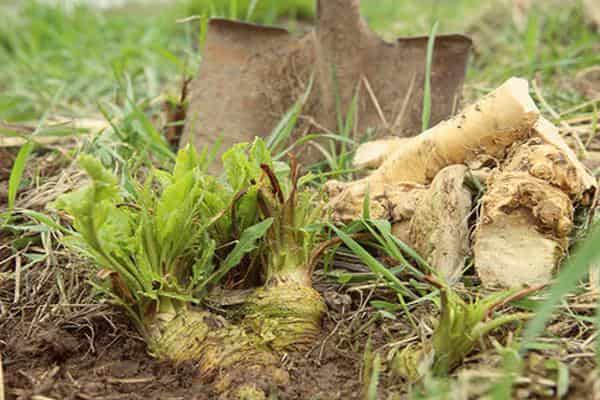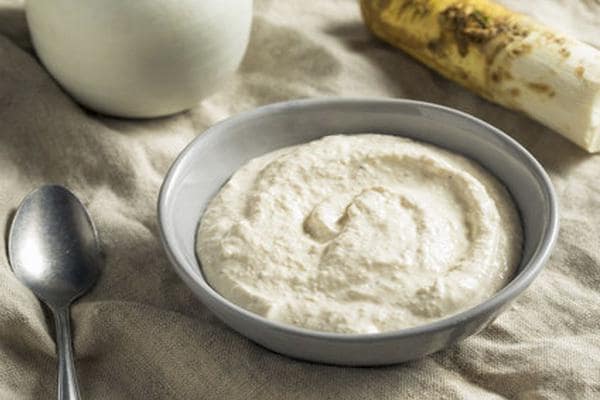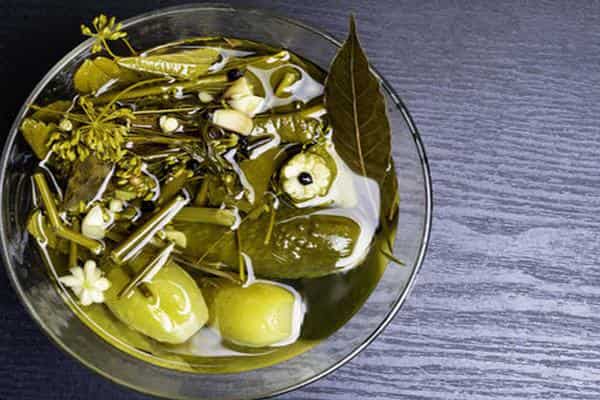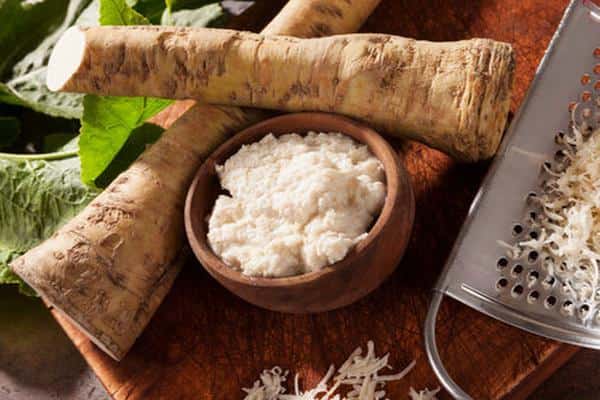Зміст
Horseradish is most often consumed at Easter when added to Christmas meat dishes. Nothing prevents you from including it in your diet in autumn and winter. The vitamins and active ingredients it contains can boost immunity, help eliminate unpleasant flu and cold symptoms, and shorten recovery time.
The root is often included (along with garlic, ginger, and honey) among natural antibiotics. Horseradish is also considered a natural remedy for joint pain and has a beneficial effect on the digestive system. It regulates its work and speeds up the metabolism, which is especially useful when using restorative diets. Horseradish is usually eaten raw, but it can also be used to make medicinal syrups and tinctures.
A few words about horseradish

Horseradish, also known as spruce or spruce, is a plant in the cabbage family. Initially, it was used only in traditional folk medicine, and then as an addition to many dishes. Horseradish has a characteristic taste and aroma that not everyone will like.
Responsible for them are glucosinolates, which also have a therapeutic effect. In addition to being added to meat, horseradish is often added to various canned foods, as well as marinades, sauces, syrups and tinctures. It is worth knowing that grated root and fresh horseradish leaves have health benefits.
What can be found in horseradish?
Horseradish is rich in active substances that have a beneficial effect on health. Thanks to the aforementioned glucosinolates, horseradish acquires antibacterial, antiviral and anti-inflammatory properties. They are among the natural antioxidants that can slow down the aging process of the skin, reduce the risk of civilization diseases and improve the elimination of toxins from the body. Horseradish contains vitamins (A, C, E, K) and minerals (potassium, sodium, magnesium, calcium and phosphorus). Horseradish roots and leaves can improve the functioning of the circulatory system, normalize blood pressure, have a beneficial effect on the intestines and stomach: they promote the absorption of valuable substances from food and stimulate the production of gastric juice, thereby improving appetite and digestion.
Horseradish syrup

It is enough to grate about 100 g of the root and add half a glass of chilled boiled water to it. Let it stand for 30 minutes and then squeeze out the juice thoroughly. It is worth mixing it with 100 g of honey or the same amount of homemade fruit juice (they will soften the spicy taste and smell). You can drink the syrup three times a day. The recommended dose is one teaspoon for children and one tablespoon for adults.
Benefits of consuming horseradish syrup
Horseradish syrup is especially recommended for colds or flu. Thanks to the vitamins and minerals it contains, it has diaphoretic and antipyretic properties. In addition, horseradish relieves persistent and moist coughs as it loses mucus and makes it easier to cough up. In addition, the syrup helps open up the upper airways and unclog the sinuses. Specificity can also relieve muscle and joint pains that often accompany infections.
Horseradish tincture
Horseradish tincture is an effective remedy for external use. It quickly relieves pain in muscles and joints and is useful for rheumatoid arthritis. When applied to sore spots, it instantly warms them up and improves blood circulation. Horseradish tincture also relieves swelling and relieves muscle spasms. It can also be used for sciatica and gout.

How to prepare horseradish infusion?
It is not difficult to prepare the tincture. It is enough to grate a medium-sized root and then pour a glass of vodka or wine vinegar. Set aside covered for 14 days, then strain. The tincture is applied only to the skin twice a day. It is worth remembering that you cannot use it on an irritated place, because it can cause burning and itching.








